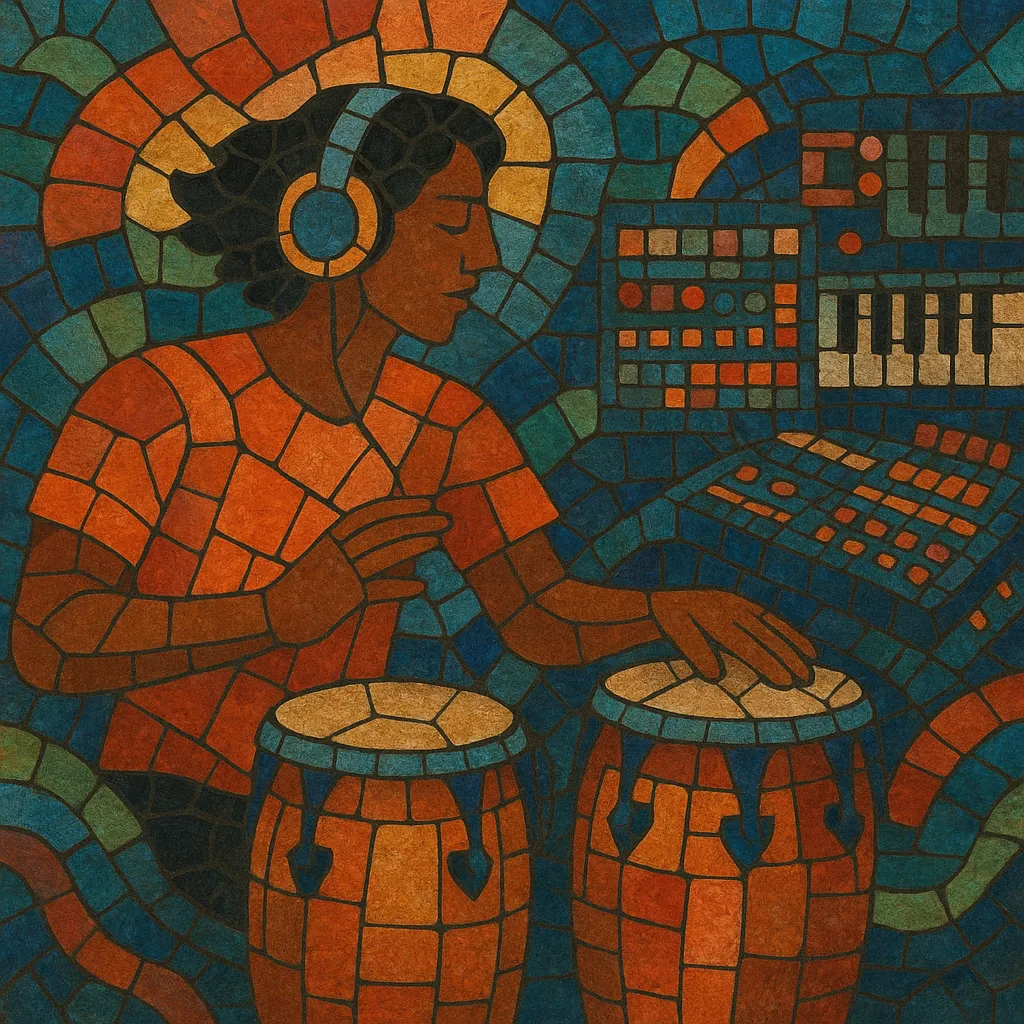Latin electronic is a broad umbrella for electronic music that fuses Latin American and Caribbean rhythms, instrumentation, and timbres with modern production techniques.
It blends house and techno beats with cumbia, salsa, and afro-diasporic grooves; layers samplers and synths over hand percussion; and weaves field recordings and folk melodies into club-ready structures.
Across the scene, you’ll hear the swing of cumbia’s 3–3–2 feel, the dembow/reggaeton cadence, dub-informed space and bass, and Andean or tropical motifs reimagined through contemporary sound design.
While geographically diverse, the style coalesced in the 2000s through DIY labels and collectives in Buenos Aires, Mexico City, Bogotá, and Lima, and later spread globally via digital culture and boutique festivals.
Latin electronic took shape as Latin American producers and the diaspora began merging local rhythms with club-oriented electronics. Early catalysts included Mexico’s borderland experiments (e.g., sample-driven hybrids and pre-tribal scenes), and Argentina’s Buenos Aires underground, where artists began reimagining cumbia, chacarera, and Andean motifs through samplers and drum machines. The advent of affordable laptops, DAWs, and netlabels made it easier for artists to exchange stems and remixes across borders.
In the mid-to-late 2000s, labels and parties (notably in Buenos Aires and Mexico City) formalized a vibrant network that championed "digital cumbia" and other Latin-rooted electronica. Producers drew as much from dub and downtempo as from house and techno, prioritizing groove, bass weight, and textural atmosphere while sampling traditional instruments and folk ensembles. Parallel movements in Bogotá and Lima added coastal and Afro-Peruvian flavors, while Mexico’s clubs incubated styles that would later intersect with global bass.
Through Bandcamp, blogs, and international showcases, Latin electronic aesthetics spread rapidly. Touring DJs connected European and North American audiences to Andean-inflected downtempo, cumbia-driven club tracks, and experimental tropical frameworks. The scene’s cross-pollination influenced and overlapped with moombahton, electro latino, and new waves of digital/neo-cumbia, while producers increasingly foregrounded environmental field recordings, ritualistic percussion, and widescreen, dubwise sound design.
By the 2020s, Latin electronic had matured into a diverse, global network. Artists balanced heritage and futurism—using modular synthesis with hand percussion, or pairing dembow foundations with ambient, jazz, and folktronica textures. Sustainability themes, indigenous collaboration, and decolonial perspectives became more visible, while the music continued to thrive in both intimate listening spaces and festival sound systems.


